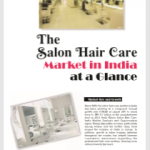
Cosmetics Industry Spotlight
The $350+ billion global cosmetics industry is comprised of six main product classes: fragrances, hair care, makeup, oral care, skin care, and toiletries. According to our research, skin care products i, account for about 30% of global sales andis the largest product class. The market that changes frequently, with new innovations, shifts in consumer preferences, and mergers and acquisitions altering the landscape each year presents new niches and opportunities… lesser known spaces that are often untapped. Therefore, Kline research, rigorously tracking information for the beauty and cosmetic market, has shifted priority on these new niches and now offers a full range of market research reports that examine these otherwise unmonitored spaces, including professional beauty, natural cosmetics and personal care, beauty devices, and alternate channels of distribution.









